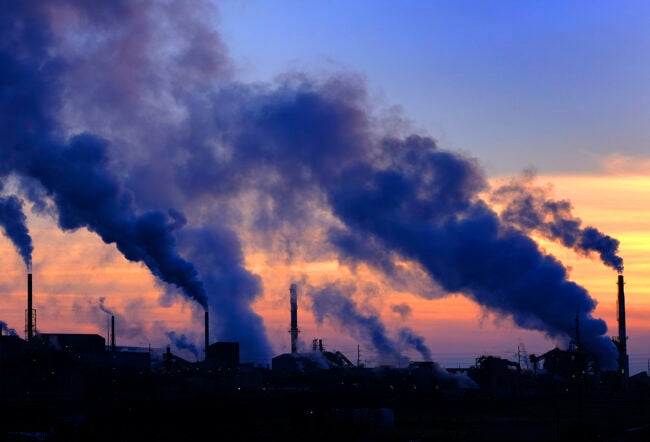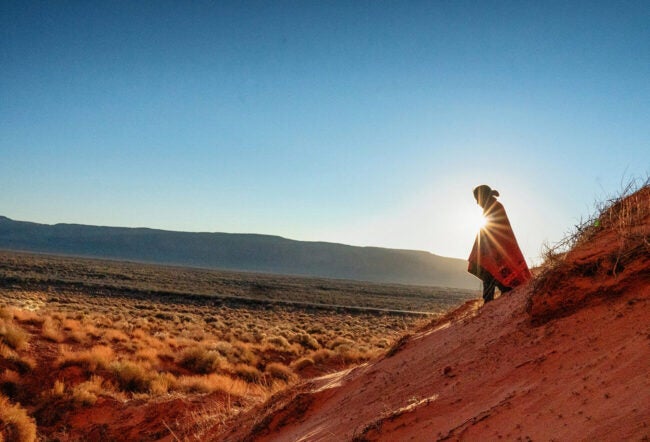Wharton’s R. Jisung Park breaks down the surprising ways that global warming impacts health, transportation, education, and more in his book, Slow Burn: The Hidden Costs of a Warming World. This episode is part of the “Meet the Authors” series.
Transcript
What Are the Hidden Costs of Global Warming?
Dan Loney: The focus on climate change has many people looking at the impacts of global warming. In many instances, the costs can be somewhat hidden, but very important nonetheless. It’s a pleasure to be joined by Jisung Park, assistant professor in the School of Social Policy and Practice here at the University of Pennsylvania. Jisung is the author of the book, Slow Burn: The Hidden Costs of a Warming World.
Jisung, it’s that component of everyday costs that you focus on in the book that is very important to thinking about global warming.
Jisung Park: That’s right, Dan. A primary motivation behind a lot of my research and certainly the book has been to help decision-makers and the public at large develop a better familiarity with what you're calling everyday costs of climate change. To understand why that's important, it helps to take a step back to think about the historical context.
Historically, I think many of your viewers are used to thinking about climate change, if they were thinking about climate change at all, as sort of a planetary catastrophe insurance. You've heard terms such as uninhabitable Earth, extinction, rebellion. It's not uncommon for us to think about climate change in terms of the broader framing: We succeed and we prevent planetary collapse, or we don't and we're just completely doomed. I think it's important, as more and more of the public and more and more business leaders and decision-makers grapple with this issue, which is not just a tangential issue, but potentially a core issue to our decision-making, to really become more familiar with what the data says about the so-called non-catastrophic consequences of climate change.
And that isn't because the framing of acting on climate change as a form of catastrophe insurance is incorrect. I think there's a lot of evidence to suggest that, to a first order, that's probably the right framework to use. But just from a practical perspective, as we think about how to sustain our engagement with and political will to move forward in terms of decarbonization, what kinds of practical decisions need to be made, whether you're a mayor or a principal or a business leader, to help adapt your organization's operations to the effects of climate change that are already happening? That's the motivation behind trying to focus on the data-driven implications of the everyday costs.
Loney: Give us an example of this. You were saying a mayor or a principal, two important jobs. It feels like there's a wide range of areas we can look at when you're talking about the impact of these costs associated with climate change.
Park: As someone who has been working in this area for over a decade now, I continue to be amazed at what the data tells us, or the scope of ways in which climate change may already be affecting us. Let’s start at the top. We now know that depending on the country you live in, depending on the industry, extreme temperature and extreme rainfall can have very significant consequences for manufacturing productivity, construction productivity.
We also know that it can affect health in a variety of ways. Mortality responses to extreme heat are among the biggest drivers of climate related health disruptions. But it's not just death, it’s other dimensions of suffering. Hospitalizations go up when the temperature is hotter. We know from some of my own research with co-authors that workers in certain occupations and industries, their propensity to be hurt on the job goes up on hotter days. Student learning is also affected, albeit in highly varied and, in many cases, very subtle ways by the temperature environment in which learning happens. Learning is hard enough as it is. But if you add to the mix, especially in settings where you don't have complete cooling infrastructure, or where extreme heat is very frequent, we find that there is a subtle but measurable effect on both cognitive performance in the short run and the accumulation of human capital, which is so important to economic flourishing both individually and in a macro sense. Heat can affect learning.
There are also ways in which the climate in which we live, whether it's temperature changes or air pollution from wildfire smoke, can affect your mood. It can actually affect how much profanity you see on your Twitter feed. So, there are all these subtle ways in which a changing climate changes our quality of life. That's why I say a mayor or a principal or leader of a Fortune 500 company -- there are ways in which your operations might be affected. I can't tell you which ways they are, but I can tell you that there's a large menu of studies that document clear links between changes in weather patterns, changes in climate variables, and these kinds of economically relevant outcomes.
Loney: I would also throw out the idea that there are probably events that occur out there in our society that end up having a downstream impact on climate. Recently, we saw in Baltimore, the Francis Scott Key Bridge. A boat hits the base of the structure, knocks the bridge down. It forced a large level of change in that part of the United States in terms of traffic. There are probably some impacts on climate.
Park: You mean, in terms of the knock-on effects on emissions from that? Absolutely. Transportation is a very large source of our emissions, and anything that can affect transportation patterns in the short or long run, will have effects on emissions.
Where I thought you were going with that, Dan, is also that there are hidden effects from climatological disasters that can affect things like bridges on not only the infrastructure but also on less visible aspects of the economy.
Loney: That, too. Because I think there's a larger discussion going on right now about infrastructure and making sure that we have structurally sound bridges, roads, etc.
Park: That’s 100% right. I'm not an engineer, but my cursory read of the engineering reports is that America's infrastructure has many, let’s say, grades that aren’t great. But that's in a stable climate. If you add a changing climate to the mix, chances are that the need, the urgency of revamping the infrastructure may be greater, especially given what we know about how climate change will affect things like the propensity of extreme rainfall and flooding.
Can a New Narrative Help Mitigate the Costs of Climate Change?
Loney: We talk about these issues a lot in the United States, but this is a larger conversation, where these types of events and impacts are occurring all around the world.
Park: The U.S. has obviously been a focus of much of our attention because that’s where we live. In some cases, from a researcher standpoint, we're guilty of looking for our keys under the lamppost, in the sense that sometimes your research is guided by data availability. Places like the U.S. have better data than many other developing countries. But that shouldn't take away from the very obvious point that these effects from climate change that are documented are not only happening in developed economies like the U.S., but one might expect the magnitude of the effects to be larger, depending on the hazard, in developing countries.
Just to give you one heuristic that I like to think about: For a given level of warming, how many more potentially damagingly hot days are we talking about from climate change? There are parts of the U.S. where, over the next two to three decades, we're expected to see a dozen or two dozen more days every summer above 90 degrees Fahrenheit, just to pick a threshold. That number in a place like Thailand or Brazil can be over 100 additional days per year above 90 degrees Fahrenheit, and that's already on a very warm base, so to speak. So absolutely, there is a sense in which we can lose sight of the international dimension of climate damages, and also the potential inequality in damages across countries, given the differences in both the amount of warming and the underlying infrastructure and economic composition.
Loney: You just used the word inequality, and that is very important. How much do you see these climate impacts having an impact on the level of inequality here and around the globe?
Park: That's a great question. There are many ways one can think about inequality. I tend to like to frame it as, what are the differences in an individual's ability to achieve a flourishing life? There are many inputs to that, but you can imagine that some necessary inputs may include things like health, the ability to secure a financial livelihood, the basic safety of your environment. To the extent that research now increasingly indicates that all of those three dimensions, which are not exhaustive, are adversely affected by climate hazards.
And to the extent that we know, both internationally and within countries, be they developed or developing, we've seen increasing wage inequality, income inequality, and in many cases, health inequality. That's the backdrop upon which these impacts of climate change are occurring. One can imagine that if things keep going the way they're going in the social and policy systems that we have been living through, climate change has a likelihood of increasing those inequalities.
Loney: What needs to be looked at now to improve things? One of the things you've also talked about is more aggressive cutting of emissions.
Park: Let me get to the emissions cutting in a second. I would like to say first that one of the things that can and should be done is a shift in the narrative. I really do believe that the way we, as individuals and as a broader public, think about and talk about climate change and acting on climate change, climate policy, is really important. Getting back to the earlier point at the outset about framing climate change as less of a binary, black-white, on-off, and more of a sliding scale. I think that will be important as we move forward in making collective and individual decisions about what we should do about it, how much we should be investing to do something about it.
I think there's a great deal of support now for the inevitability of the transition away from fossil fuels. You hear about the clean energy transition, the green transition, etc. But if you look under the hood, there's less consensus about how quickly, at what cost, privileging which industries over others. Those conversations take as essential factual inputs, among other things, the damages from a warmer planet, and not just the binary of five degrees of warming and we're all doomed, versus pre-industrial. Every part, every degree on that spectrum represents either damages we avoid, so there are benefits or costs of acting and reducing those emissions.
The more we can understand that climate change, as with many policy issues, has a bunch of gray area that we need to operate in, and that increasingly there is the data to support a more quantitatively nuanced understanding of the gray area, I think that would allow us to have a more constructive and sustained debate about how much we should be reducing emissions, how aggressively, how quickly, etc.
Just one data point I will note, and I mention it in the book, in terms of the ideal stringency, or aggressivity of emissions cuts. Your listeners may be familiar with the concept called the social cost of carbon. The basic idea is it represents the discounted present value of the total damages to society that are set in motion by us emitting an additional ton of CO2 today. There's a lot that goes into that number, both theoretical and empirical. But that number, in some sense, represents the severity of the climate change problem. That number, at least according to recent EPA updates that incorporate a lot of the studies that I have mentioned, is somewhere in the ballpark of $190 per ton CO2. Less than a decade ago, that number was somewhere in the ballpark of $50 per ton CO2.
Just to give you a sense of how potentially serious the costs of climate change are, another way to think about that is with some assumptions, right? Given the amount of emissions we emit on an average basis, we're setting in motion several trillions of dollars’ worth of discounted future damages because of our emissions. That should give us at least some sense of how much we should, as a society, be willing to pay to cut those emissions, if you believe in benefit-cost analysis, which I do, as one input to decision making. That's a long-winded way of saying I think we can start with changing the narrative a little bit on how we think about climate action.
The other point I'll mention is that almost irrespective of how quickly we're able to reduce emissions, there's going to be a lot of adaptation that needs to happen between now and a stable climate, whenever that ends up being. I think that the more we can familiarize ourselves with the everyday cost, the everyday impacts of a changing climate, even in a so-called non-catastrophic scenario. I think the more nuanced our interventions can be in helping our organizations, our societies adapt to climate change that's coming.



